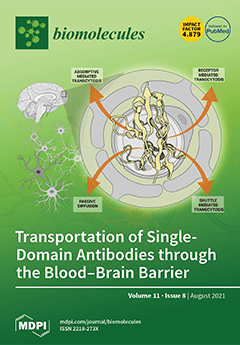Methyl CpG binding protein 2 (MeCP2) is the main DNA methyl-binding protein in the brain that binds to 5-methylcytosine and 5-hydroxymethyl cytosine.
MECP2 gene mutations are the main origin of Rett Syndrome (RTT), a neurodevelopmental disorder in young females. The disease has no existing cure, however, metabolic drugs such as metformin and statins have recently emerged as potential therapeutic candidates. In addition, induced
MECP2-BDNF homeostasis regulation has been suggested as a therapy avenue. Here, we analyzed nascent RNA synthesis versus steady state total cellular RNA to study the transcriptional effects of metformin (an anti-diabetic drug) on
MECP2 isoforms (
E1 and
E2) and
BNDF in a human brain cell line. Additionally, we investigated the impact of simvastatin (a cholesterol lowering drug) on transcriptional regulation of
MECP2E1/E2-BDNF. Metformin was capable of post-transcriptionally inducing
BDNF and/or
MECP2E1, while transcriptionally inhibiting
MECP2E2. In contrast simvastatin significantly inhibited
BDNF transcription without significantly impacting
MECP2E2 transcripts. Further analysis of ribosomal
RNA transcripts confirmed that the drug neither individually nor in combination affected these fundamentally important transcripts. Experimental analysis was completed in conditions of the presence or absence of serum starvation that showed minimal impact for serum deprival, although significant inhibition of steady state
MECP2E1 by simvastatin was only detected in non-serum starved cells. Taken together, our results suggest that metformin controls
MECP2E1/E2-BDNF transcriptionally and/or post-transcriptionally, and that simvastatin is a potent transcriptional inhibitor of
BDNF. The transcriptional effect of these drugs on
MECP2E1/E2-BDNF were not additive under these tested conditions, however, either drug may have potential application for related disorders.
Full article






